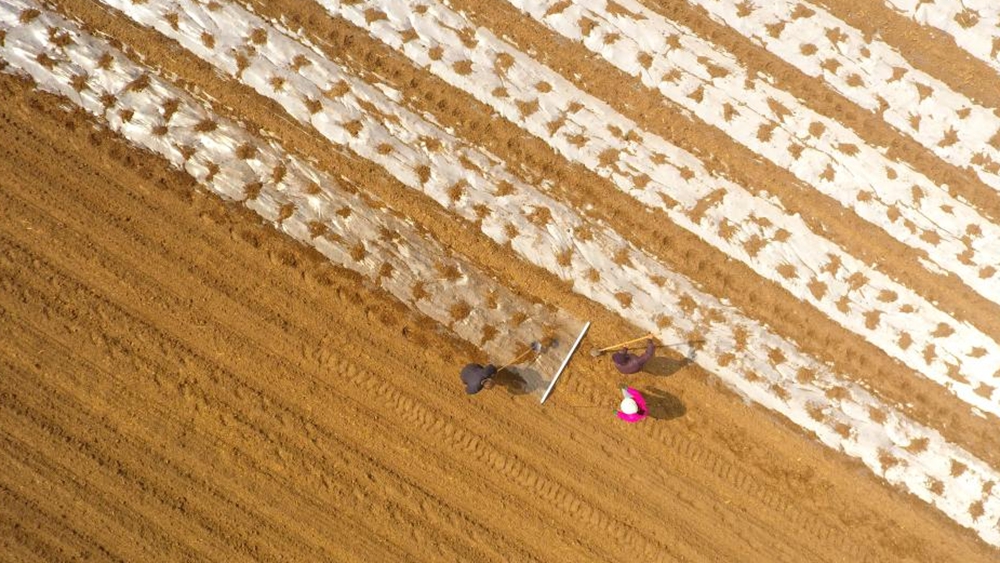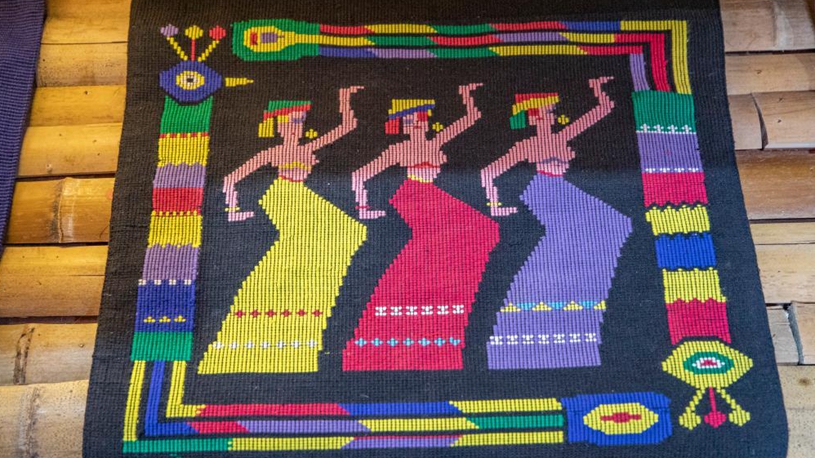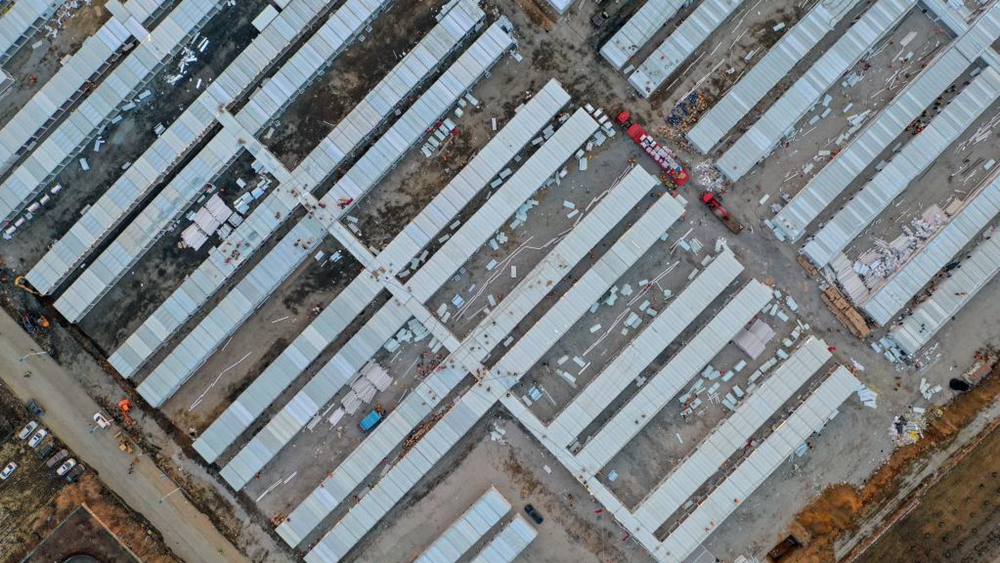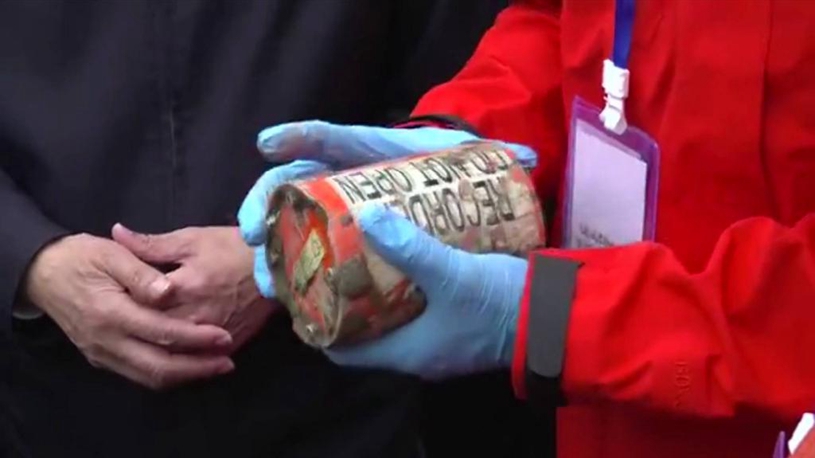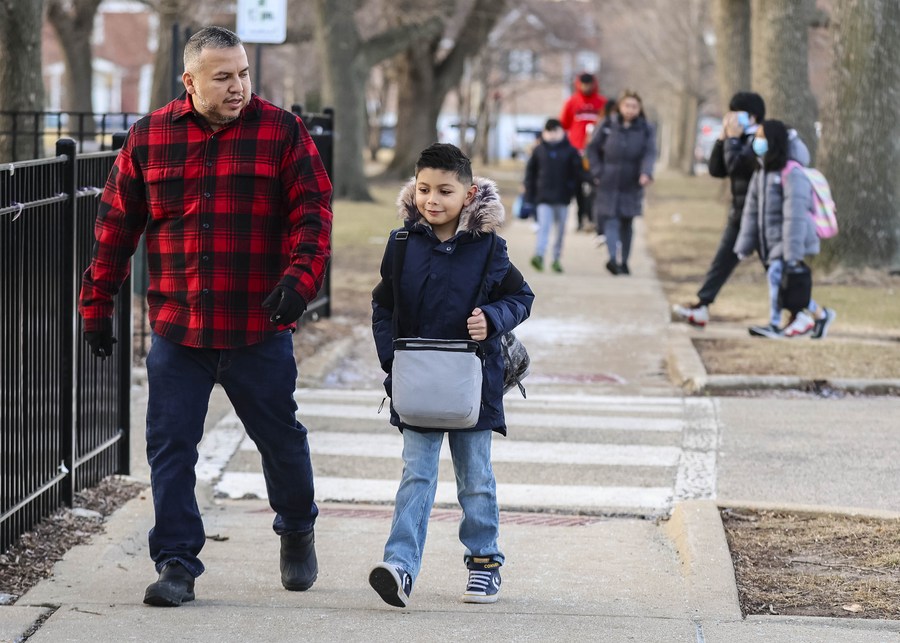
Students arrive at Rogers Fine Art Elementary School in Chicago, the United States, on March 14, 2022. Chicago Public Schools (CPS), the third largest school district in the United States, lifted mask mandate and introduced a mask-optional policy beginning Monday. (Photo by Joel Lerner/Xinhua)
The 7-day average new COVID-19 deaths on Saturday in the U.S. dropped to 796, a 39 percent change over 14 days.
NEW YORK, March 27 (Xinhua) -- The U.S. Food and Drug Administration is poised to authorize a second COVID-19 vaccine booster for anyone 50 and older amid concerns that a new Omicron subvariant could hit the United States.
The authorizations for second Pfizer-BioNTech and Moderna boosters could be announced as soon as next Tuesday, according to U.S. media reports.
On Saturday, Hawaii became the last U.S. state to remove the indoor masking requirement as the Omicron surge recedes. The state also suspended its Safe Travels program, allowing travelers from the continental United States to enter without submitting proof of vaccination or the results of an approved COVID-19 test.
Idaho went a step further as its State Legislature passed a bill last week to prohibit businesses from requiring a COVID-19 vaccination for employment or service and prevent unvaccinated individuals from being "treated differently or discriminated against."
According to the bill, the decision to receive a vaccine is "a very personal and individual decision" and one that public or private entities should not mandate. The bill was supported by Republican legislators and landed on Governor Brad Little's desk this week. Little, also a Republican, has not stated whether he will veto or sign it.
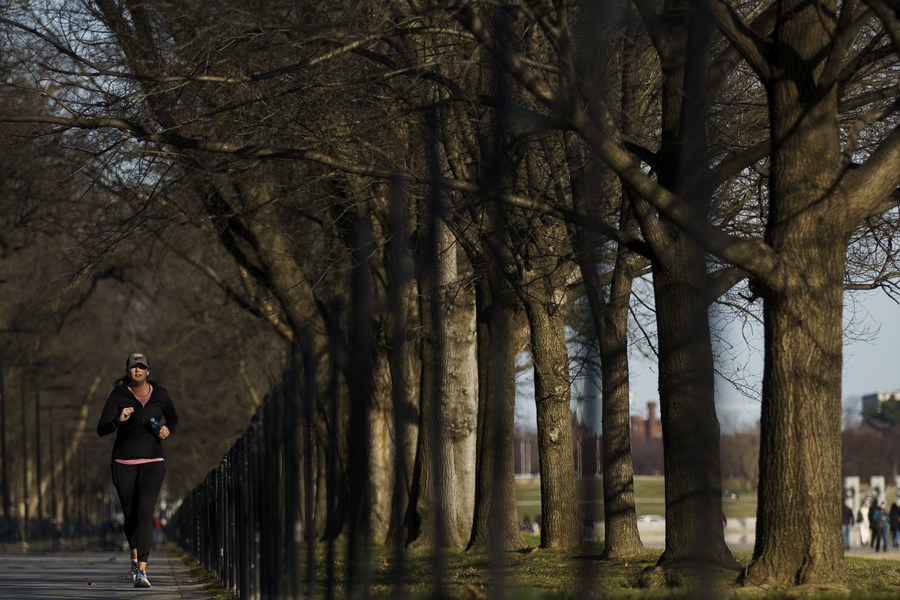
A woman jogs on the National Mall in Washington, D.C., the United States, on March 4, 2022. (Photo by Ting Shen/Xinhua)
While COVID-19 restrictions are being lifted or eased in most parts of the country, health officials in Washington are cautiously monitoring the behavior of Omicron BA.2 sub-variant, the more contagious cousin of the Omicron variant that has spread through Europe and other parts of the world, which now represents about 30 percent of new infections in the Mid-Atlantic region that includes the District of Columbia, Maryland and Virginia.
"Public health experts say BA.2 will likely become the dominant strain in the Washington region over the next several weeks," reported The Washington Post, "driving another uptick in new infections after a steady decline since the peak of the Omicron surge in early January." On Friday, the region's weekly average for new cases was 1,131, the lowest rate since July.
The NYT data analysis has shown that the 7-day average new COVID-19 deaths on Saturday in the United States dropped to 796, a 39 percent change over 14 days. New coronavirus cases were 30,174, falling 12 percent. ■



